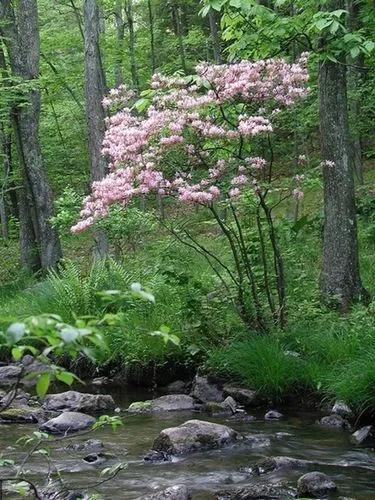This type of Mandevilla will save you space and energy, as its low maintenance and smaller size won’t compromise its characteristic blooming beauty.
Mounding mandevilla Care
Mounding mandevilla



Mandevilla, commonly known as Rocktrumpet, is a genus that comprises a range of species. There are two varieties of Mandevillas, vining or climbing and mounding or non-climbing. This means mounding varieties will remain arranged in tidy small mounds, giving them a bush-like appearance and making them easy to identify alongside other Mandevillas. They’ll also take up less space, making them a great alternative for those who can’t accommodate vining varieties.
Depending on the species, they’ll display a variety of colors, from bright pink to deep red to white. Flower shapes can also vary, and they usually bear numerous flowers, typically towards late summer. Due to their tropical origins, they have glossy green leaves, and although they can be grown as houseplants, they tend to enjoy spending the warmer months outside and only be brought indoors in colder months.
They’re low maintenance, and most varieties are usually smaller than 18 inches (45 cm) tall. They’ll attract wildlife, such as butterflies and hummingbirds.
How to Care for the Plant

Water

Mandevilla should be watered every day, slowly, as it enjoys consistent moisture and can only tolerate small periods without water. Try not to overwater it, and don’t let the soil become soaked.

Pruning

To ensure better tolerance of winter temperatures, prune this plant before the first frost. Pluck out the flowers as they begin to fade.

Fertilizer

This plant should be fed every few weeks, preferably every two weeks.

Sunlight

Mandevilla enjoys full sun and lots of hours of direct light. Keep in mind that it will bloom less in the shade.

Soil

Soil should be rich in nutrients and organic matter.

Propagation

Propagate by seed or by cuttings. Seeds should be soaked in water before planting and will germinate in a month. Take cuttings in spring with two leaves and a side shoot and wait for roots to develop.

Temperature

Warmer conditions will promote growth, and it can sustain summer heat. It can’t survive low temperatures or frost, so temperatures shouldn’t drop below 59 ºF (15 ºC).

Container

It can be planted in any container or hanging basket.

Fun fact

Keep in mind this plant is poisonous when ingested, so keep it out of the reach of pets.

Popularity

253 people already have this plant 66 people have added this plant to their wishlists
Discover more plants with the list below
Popular articles






